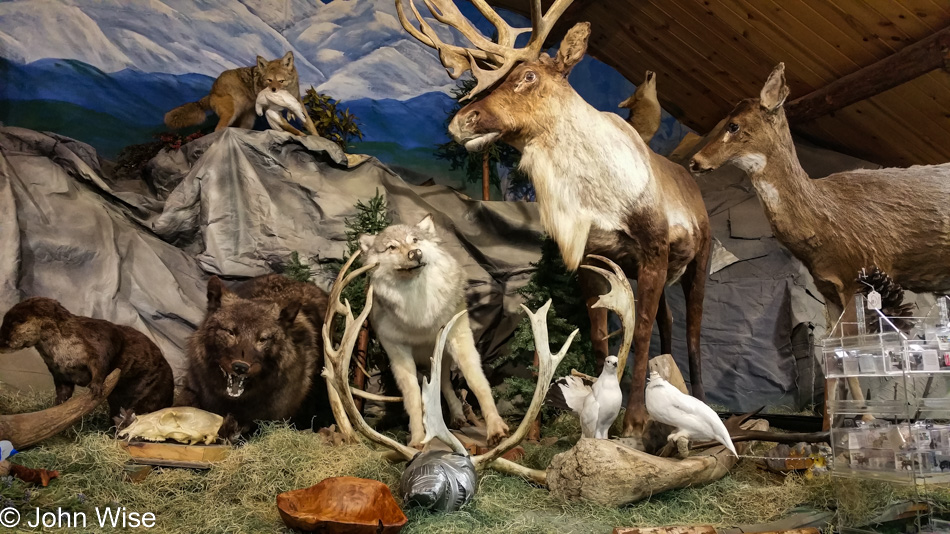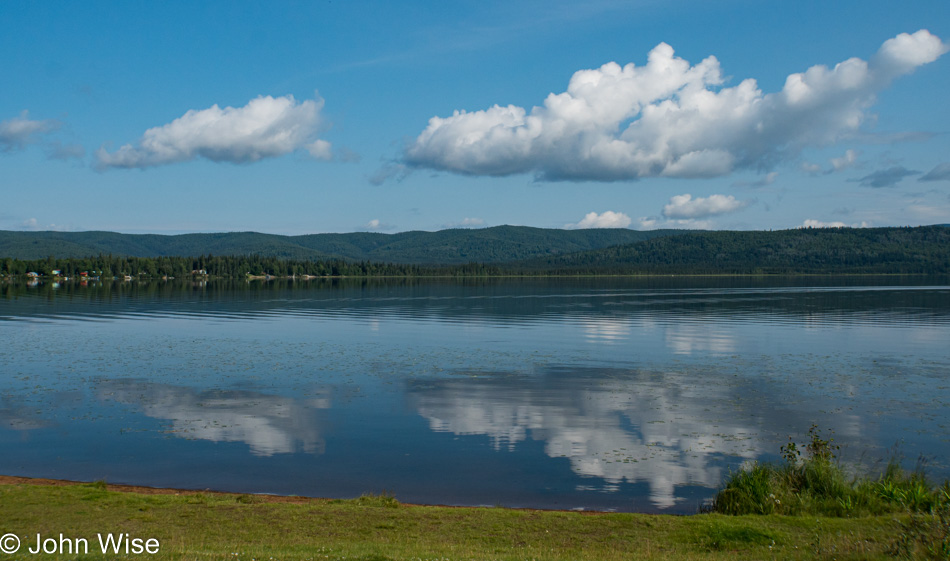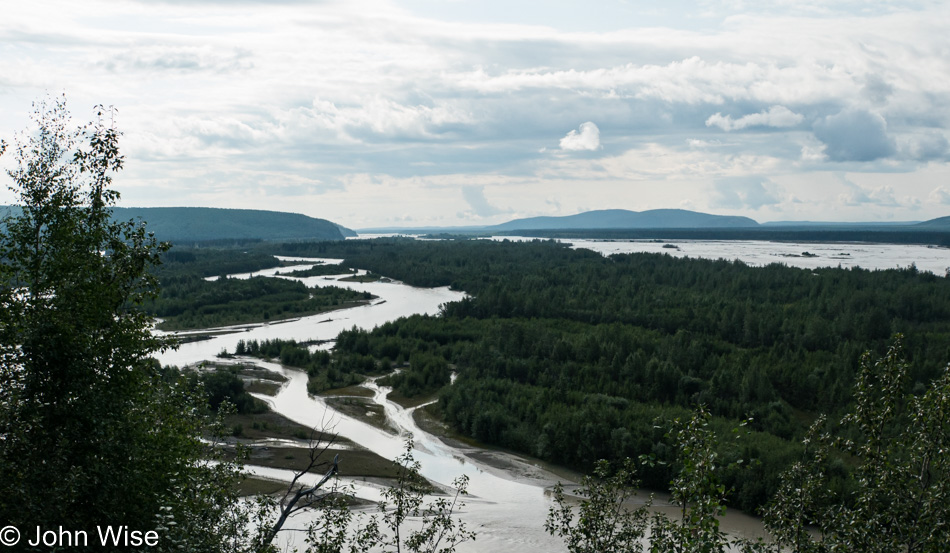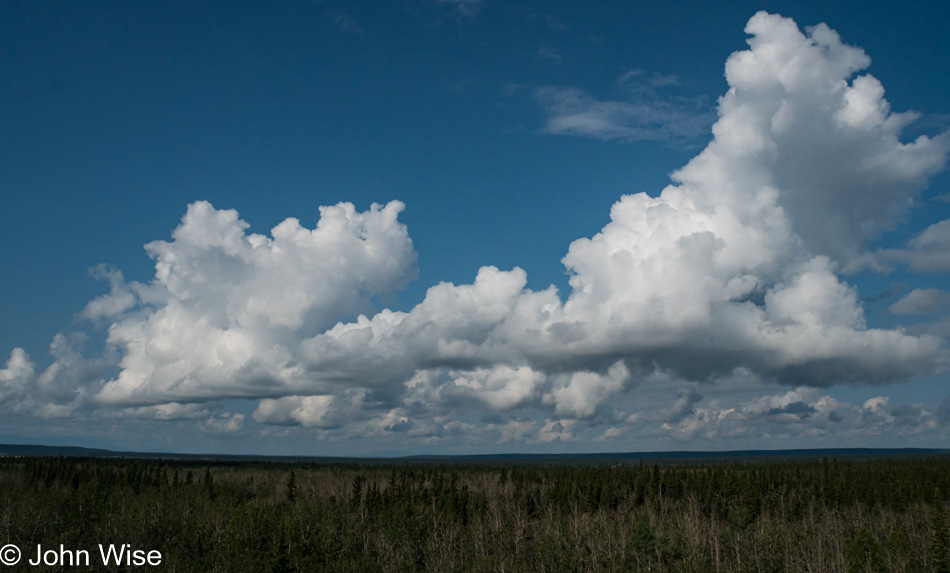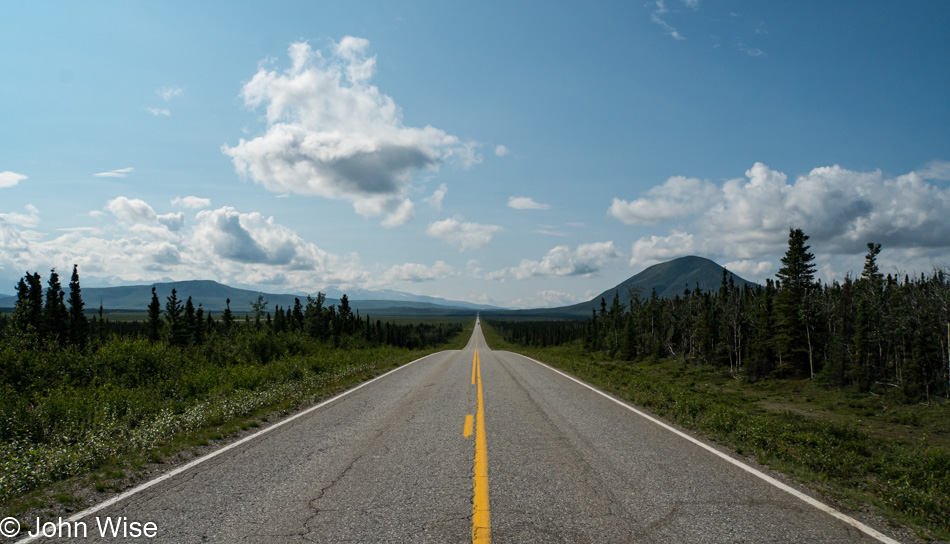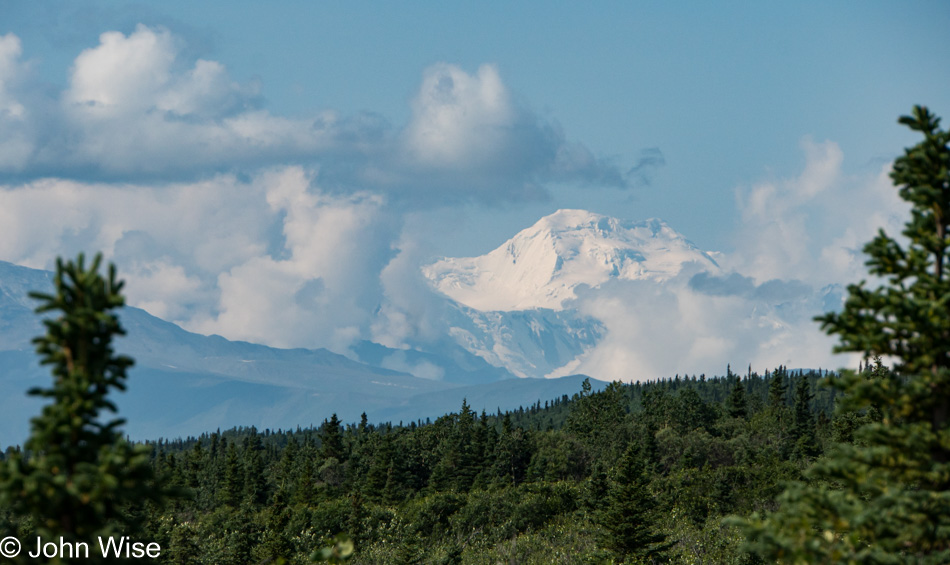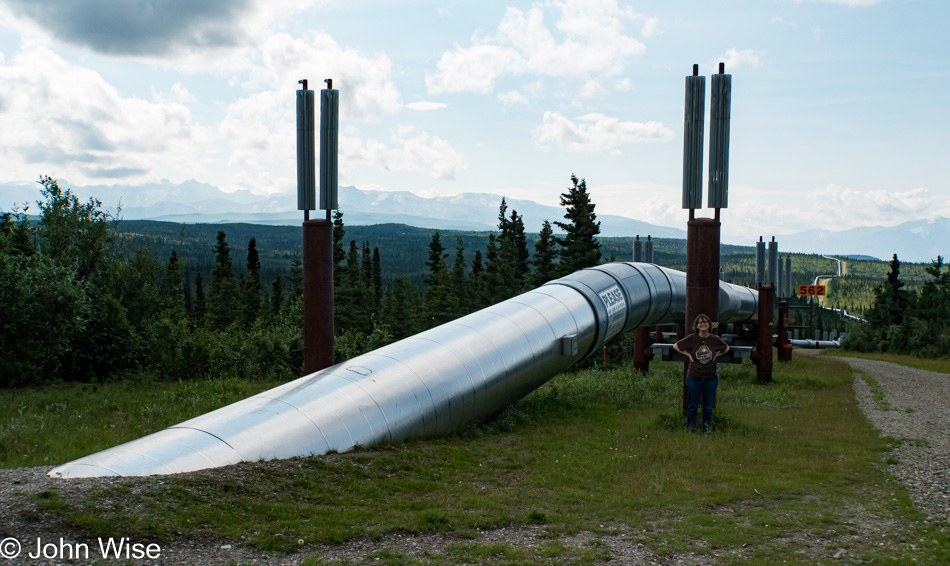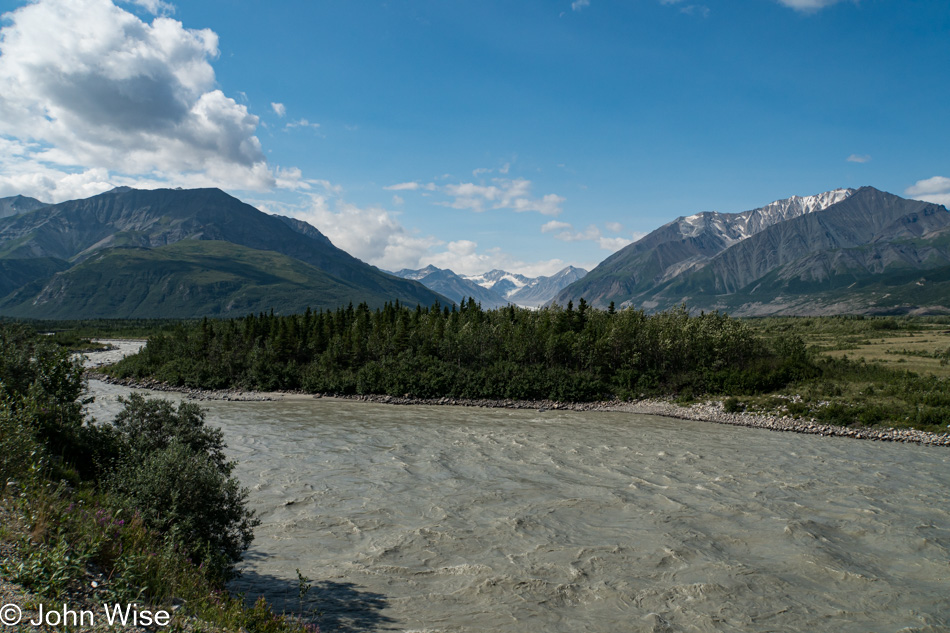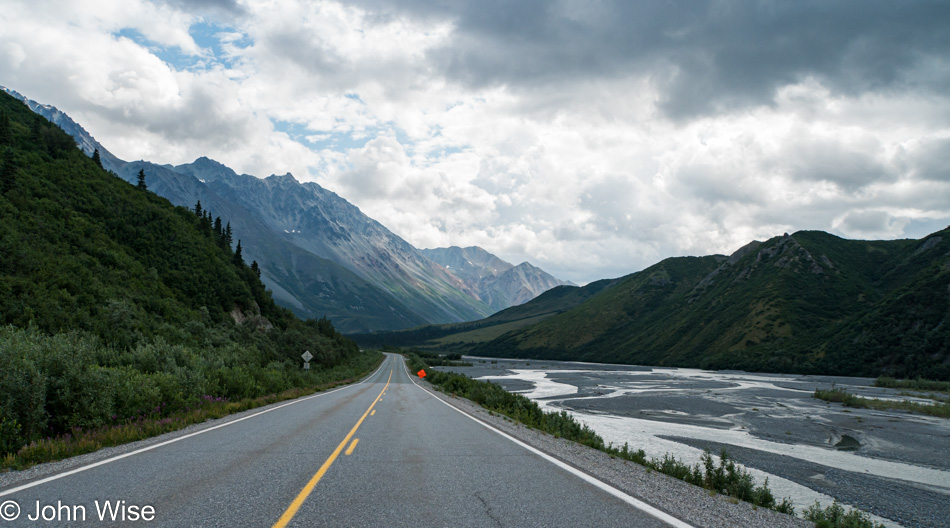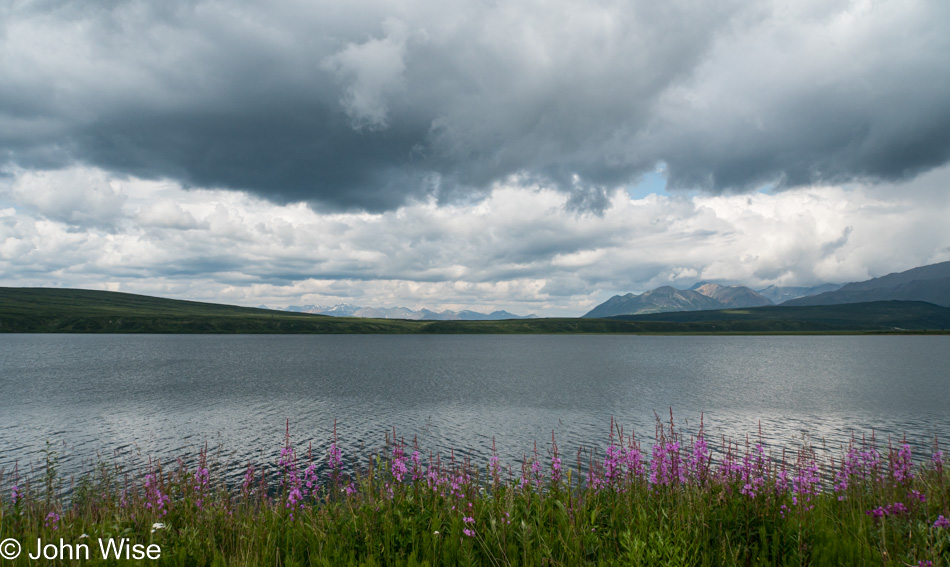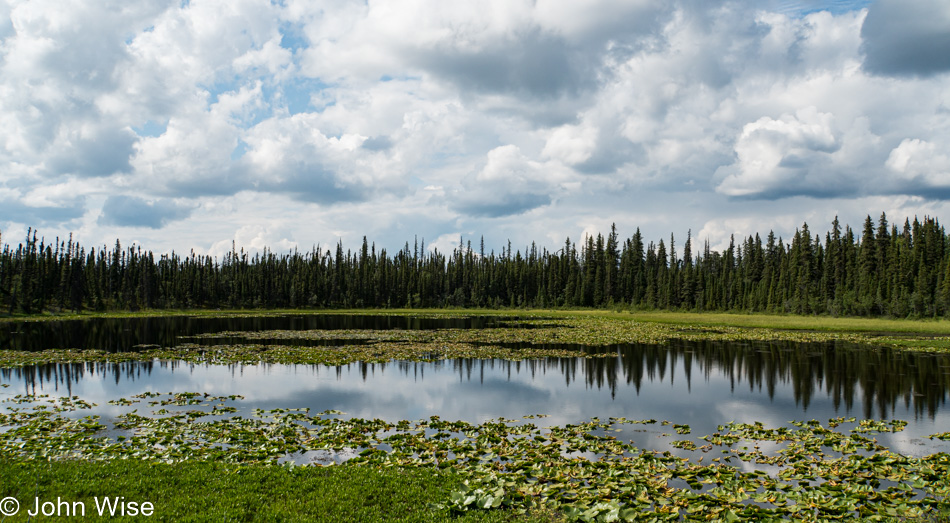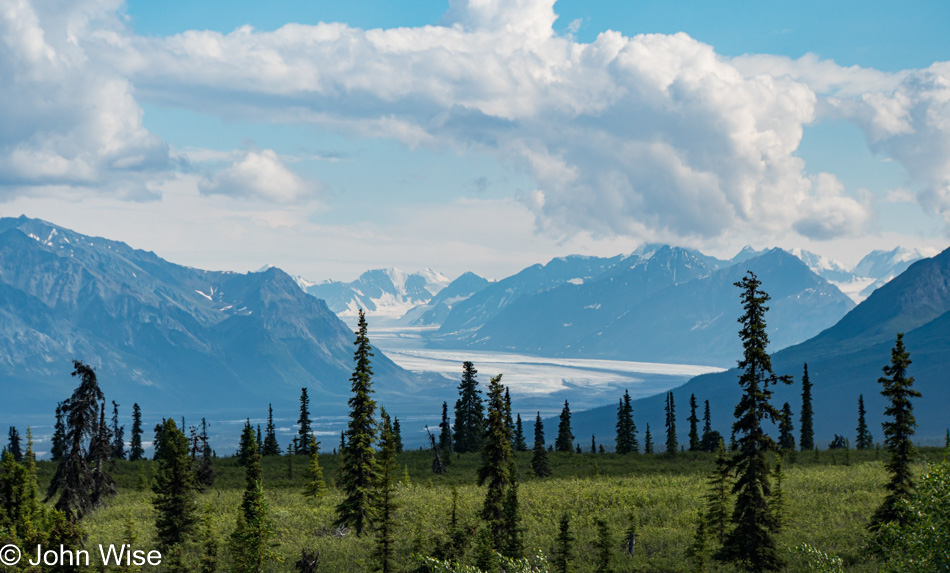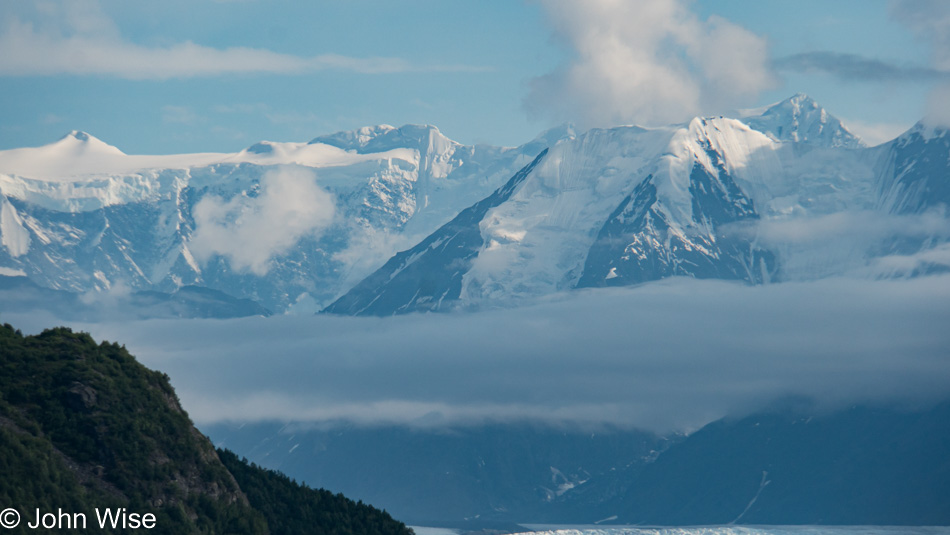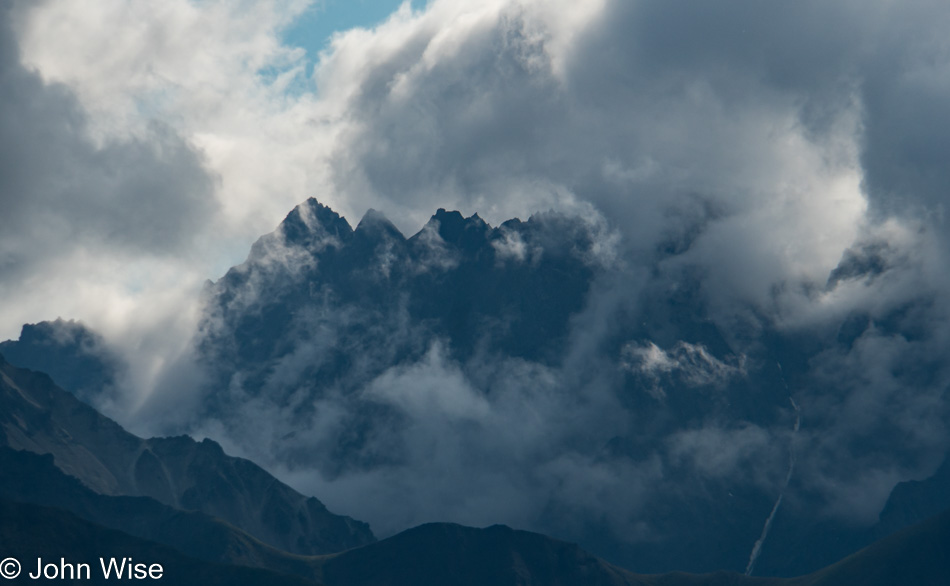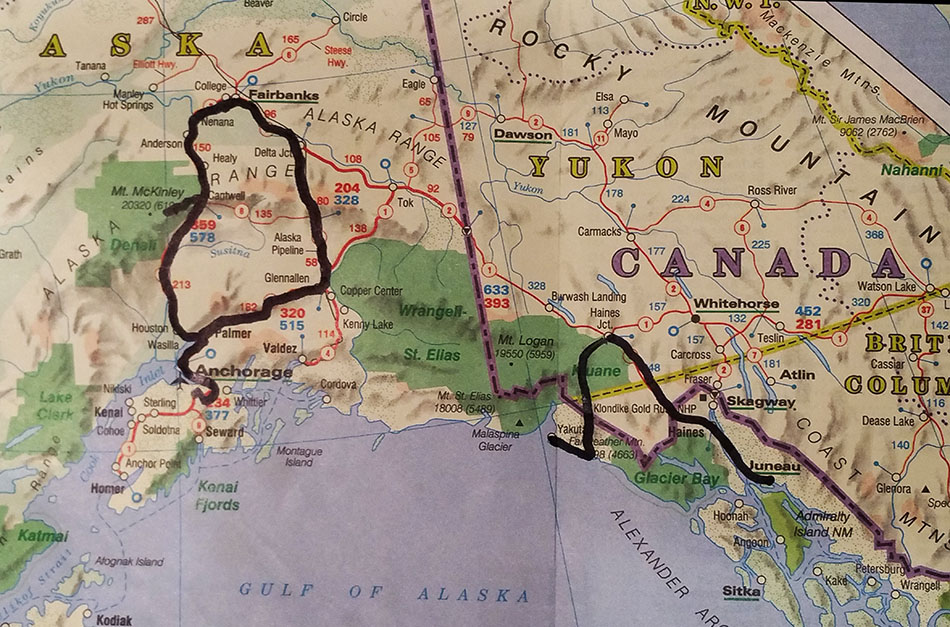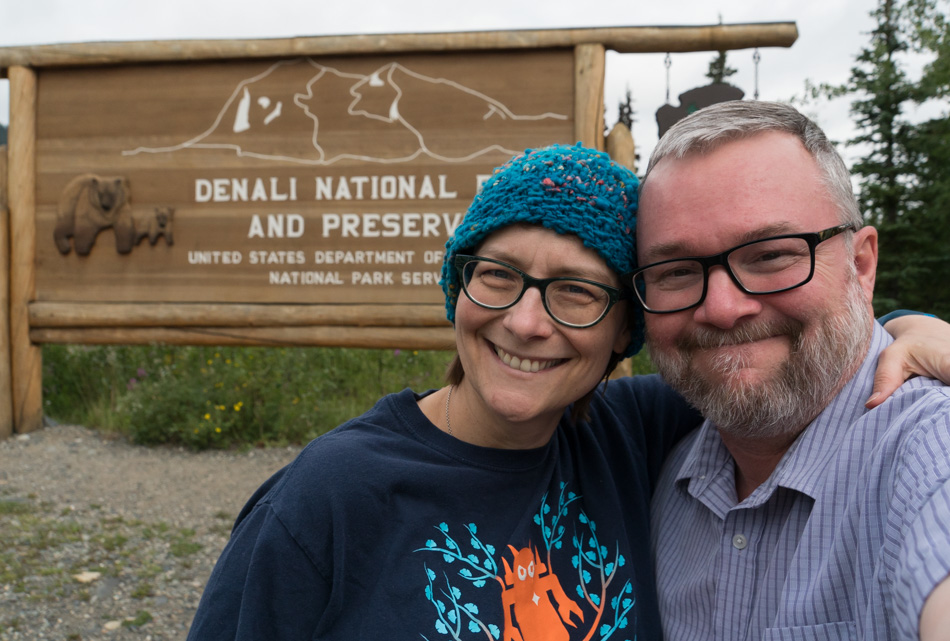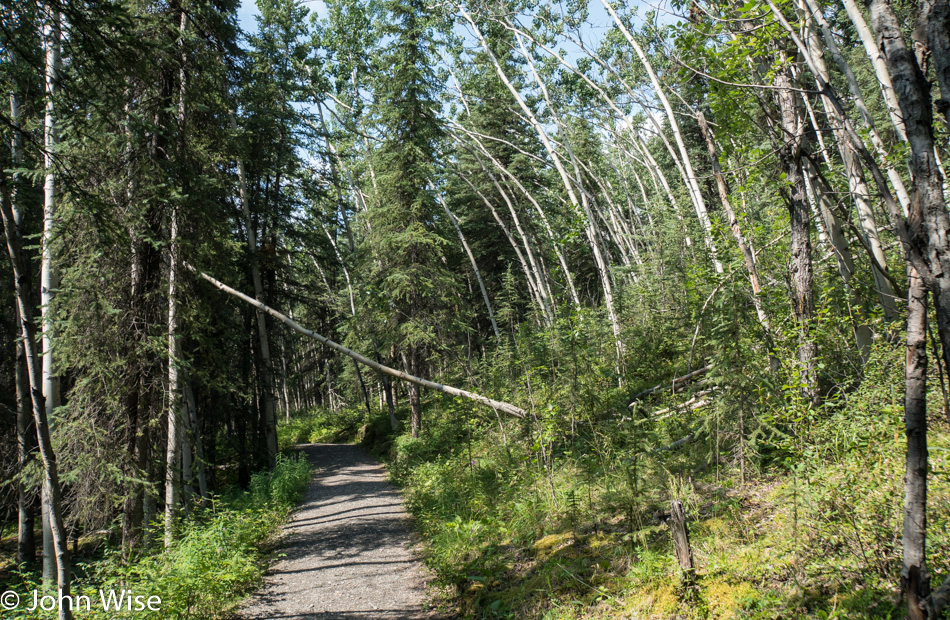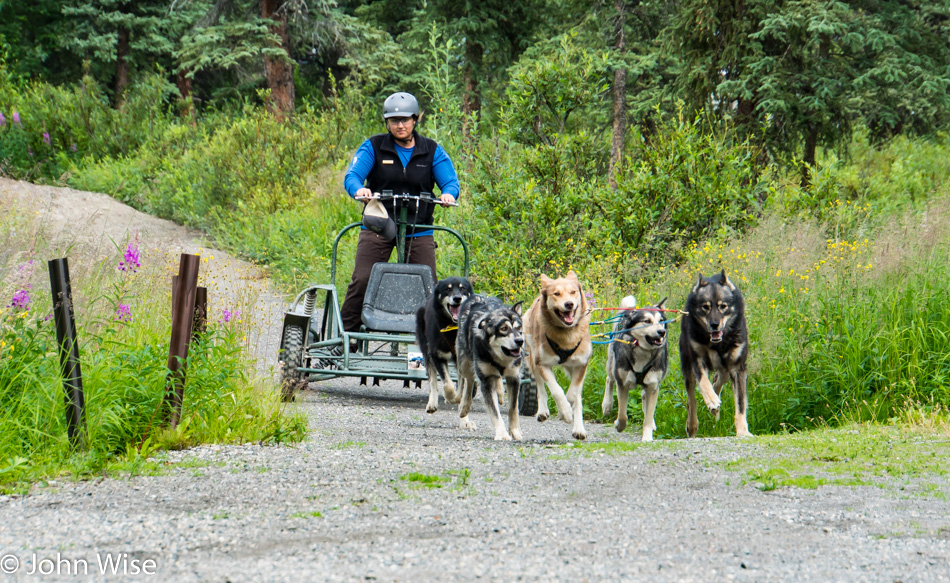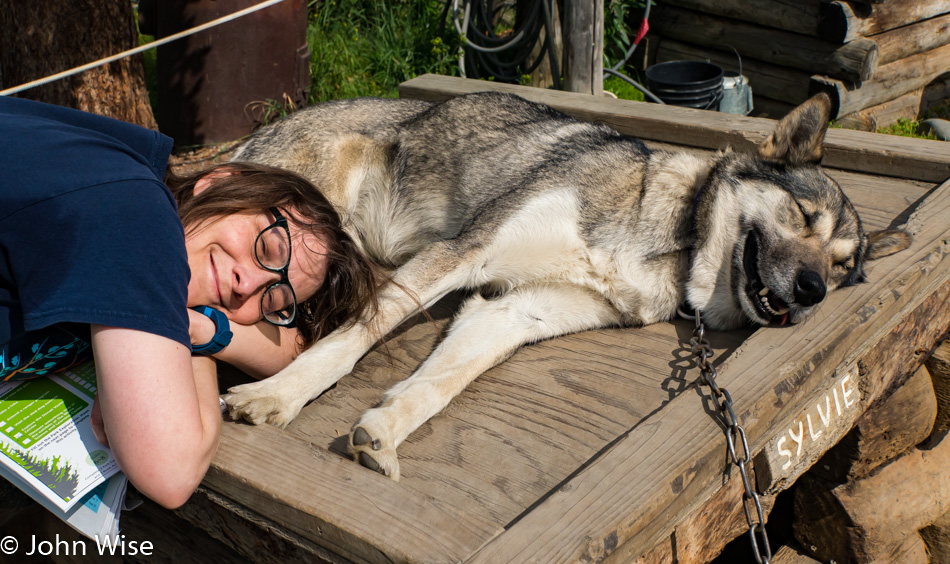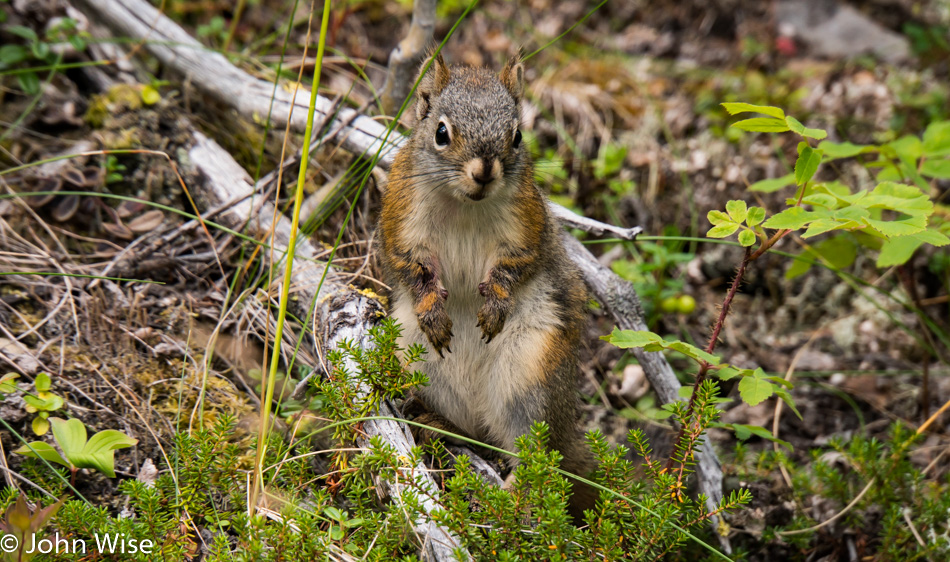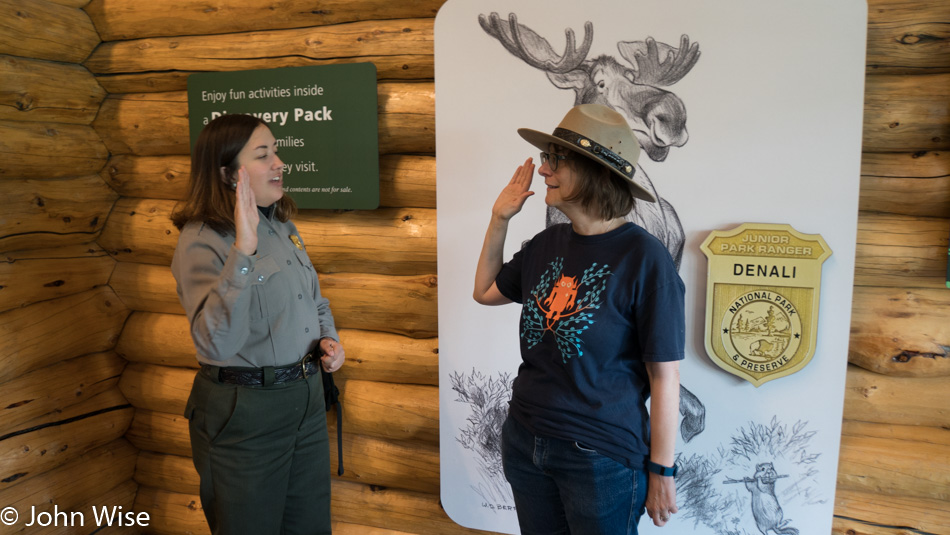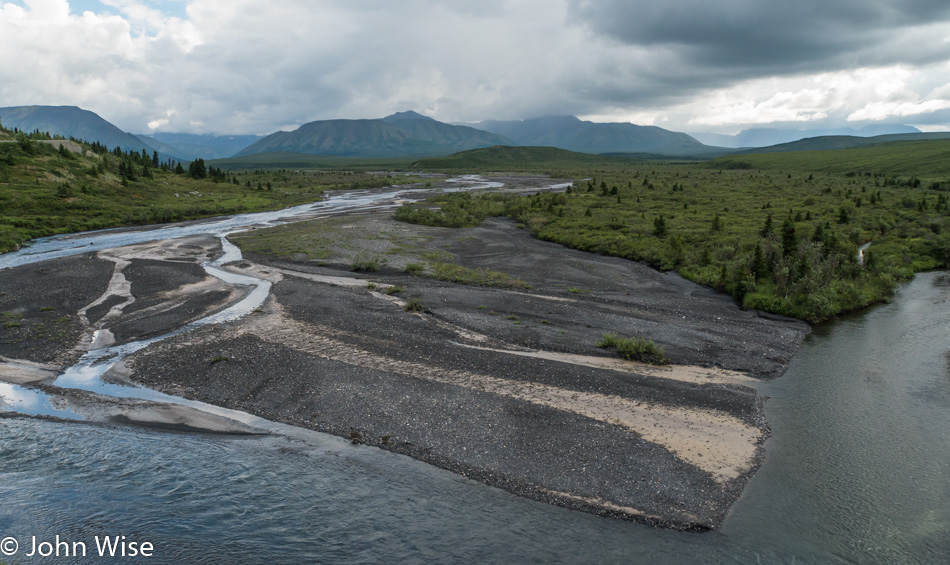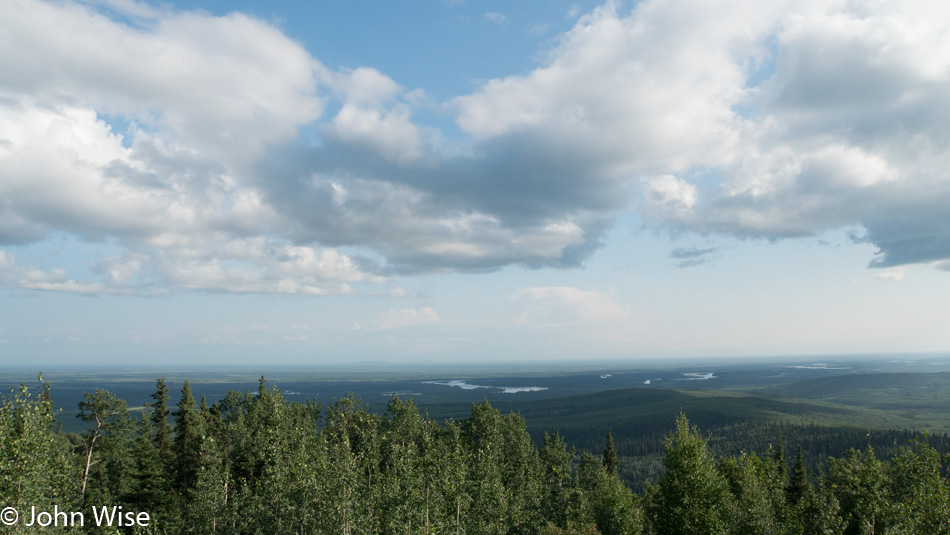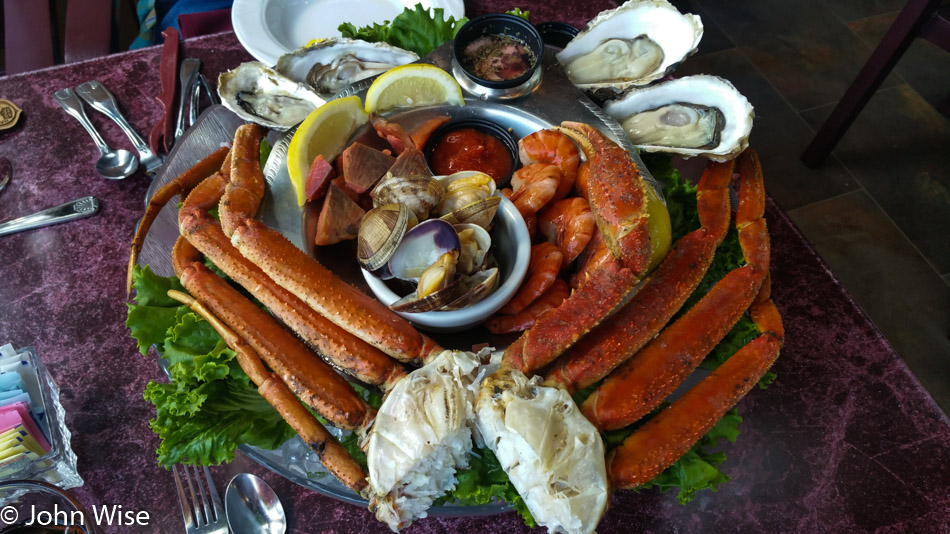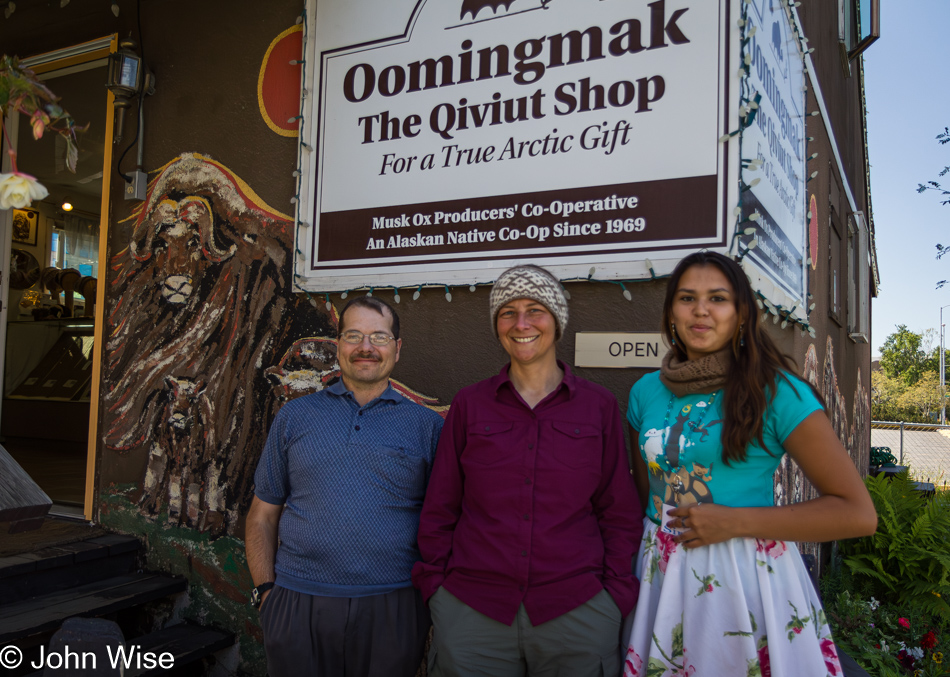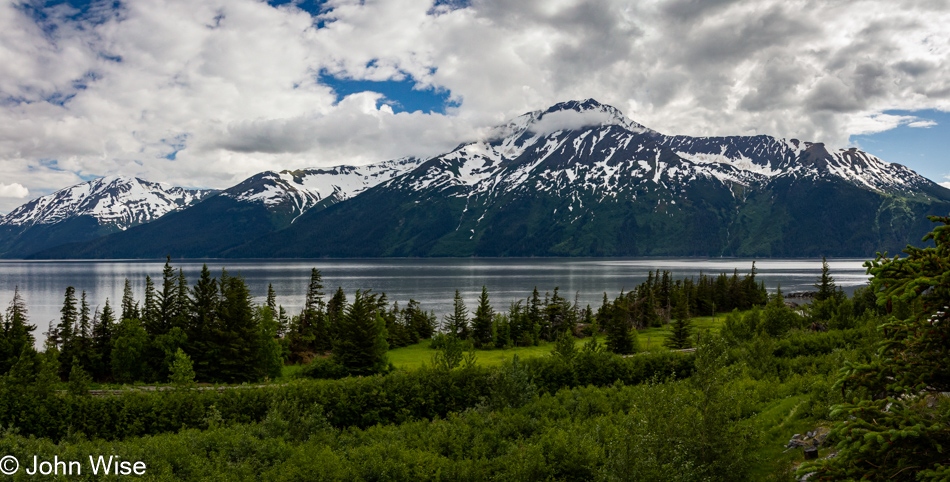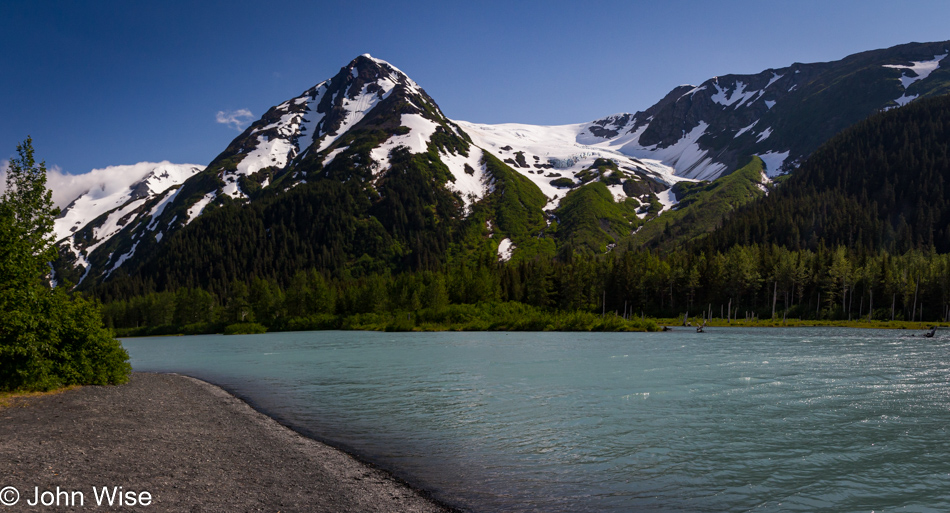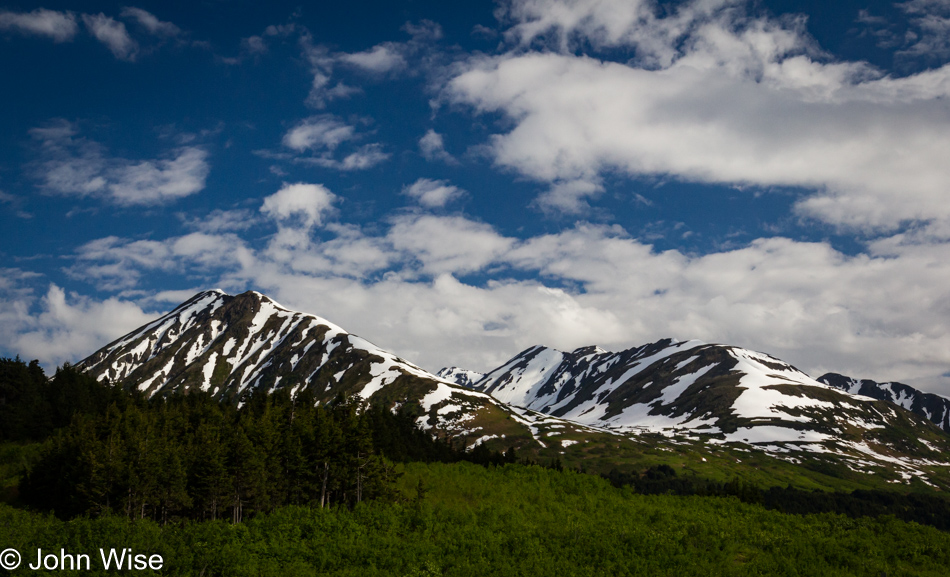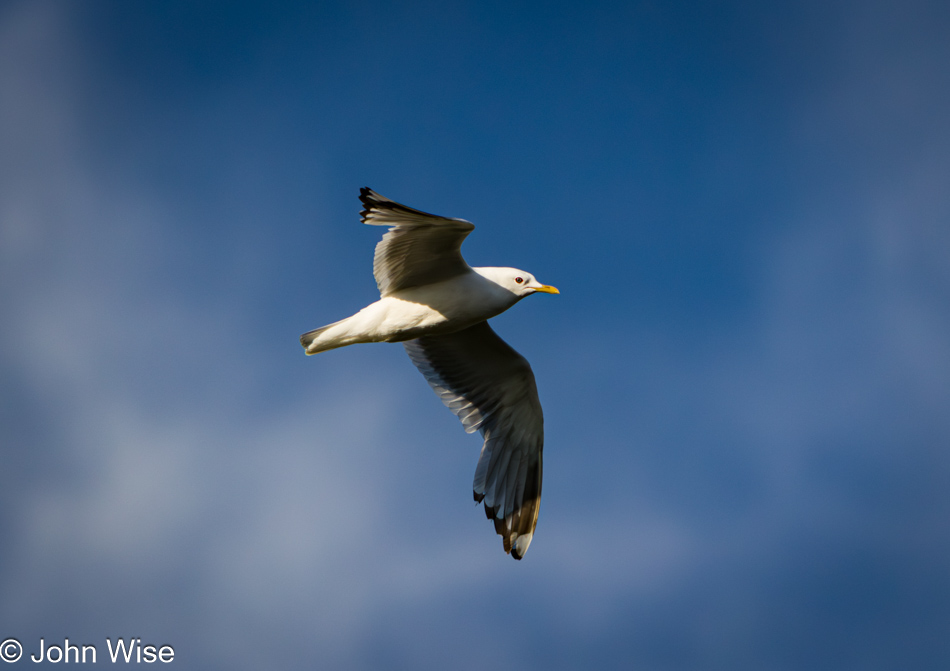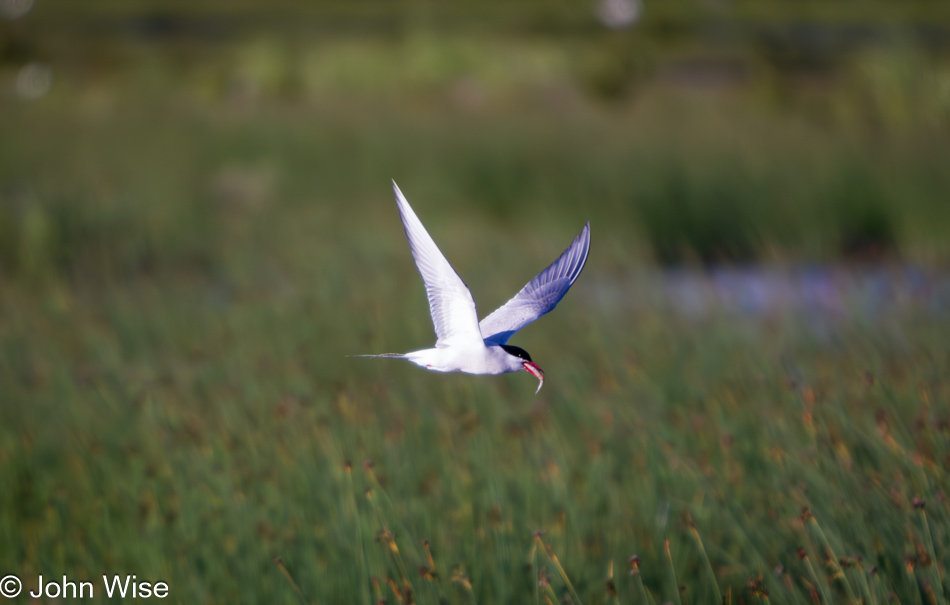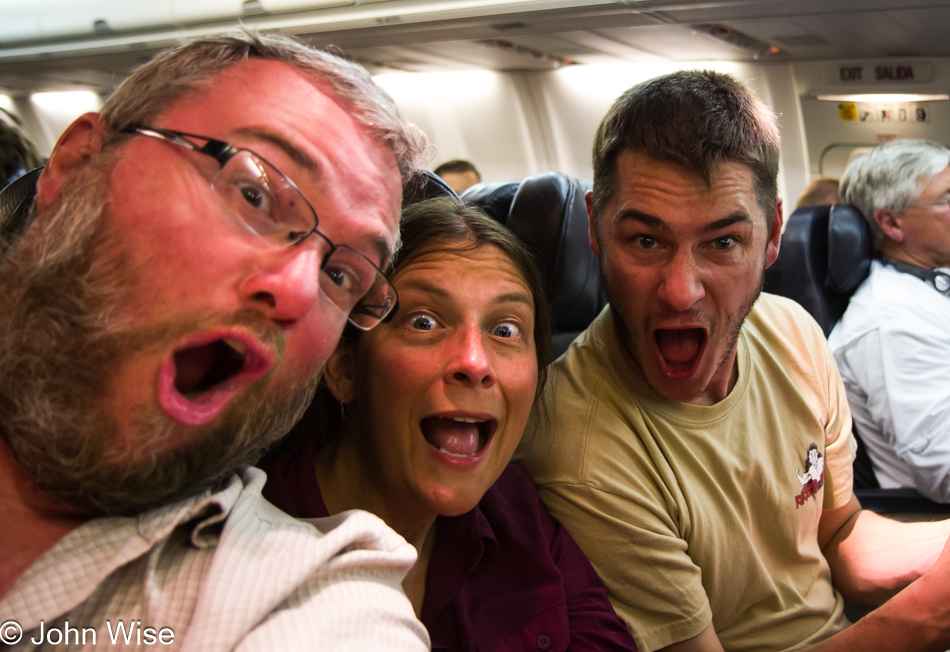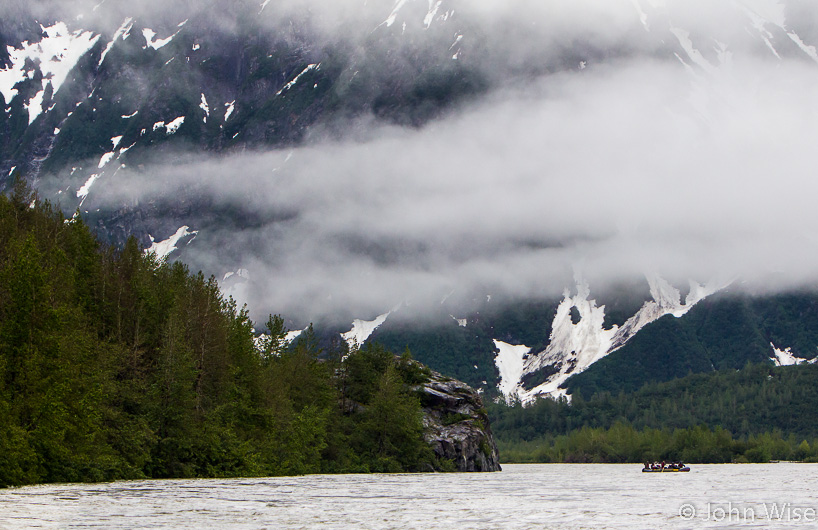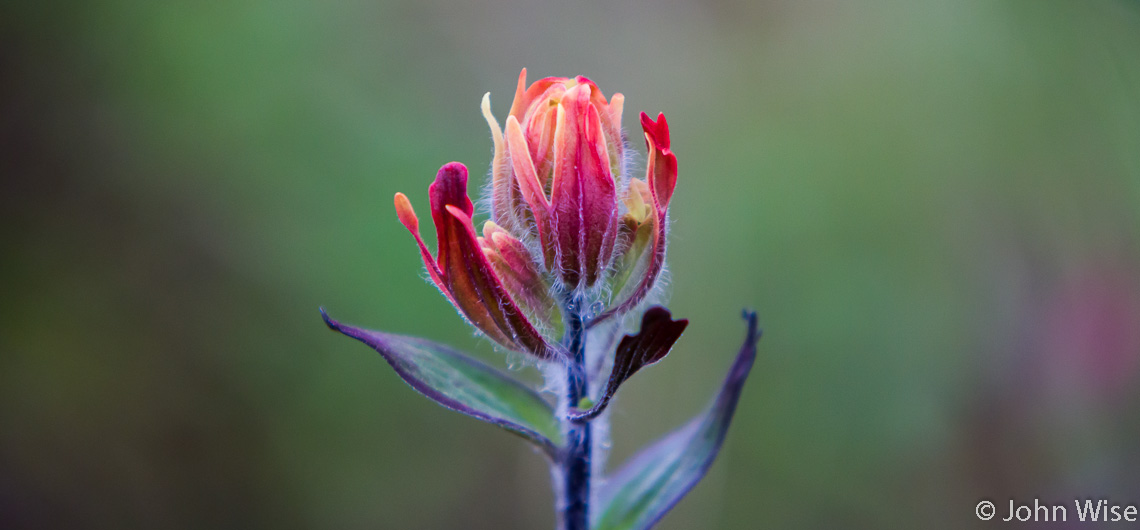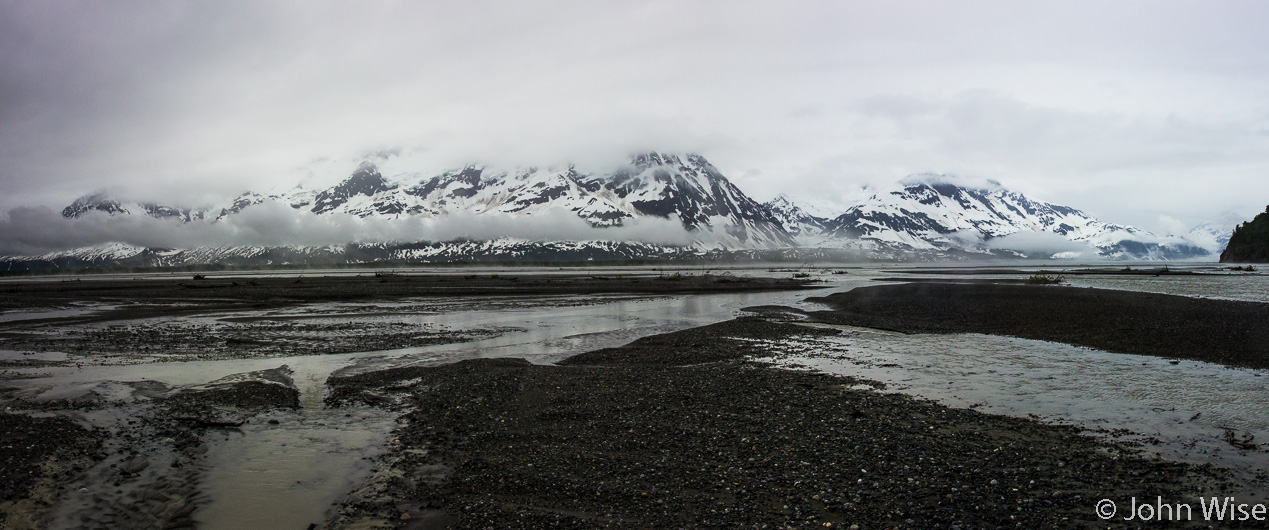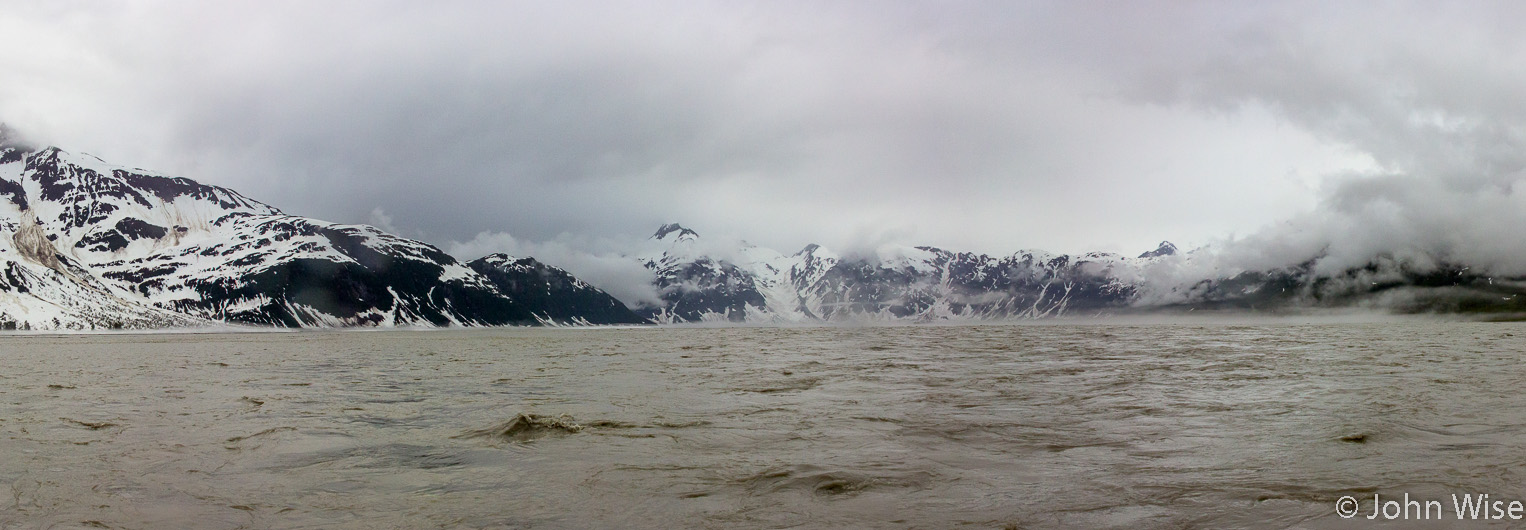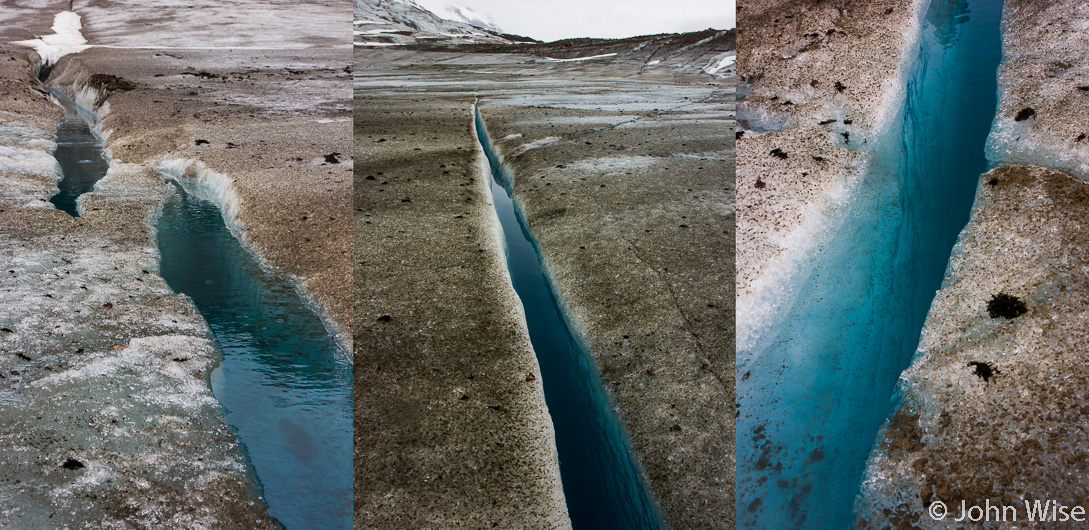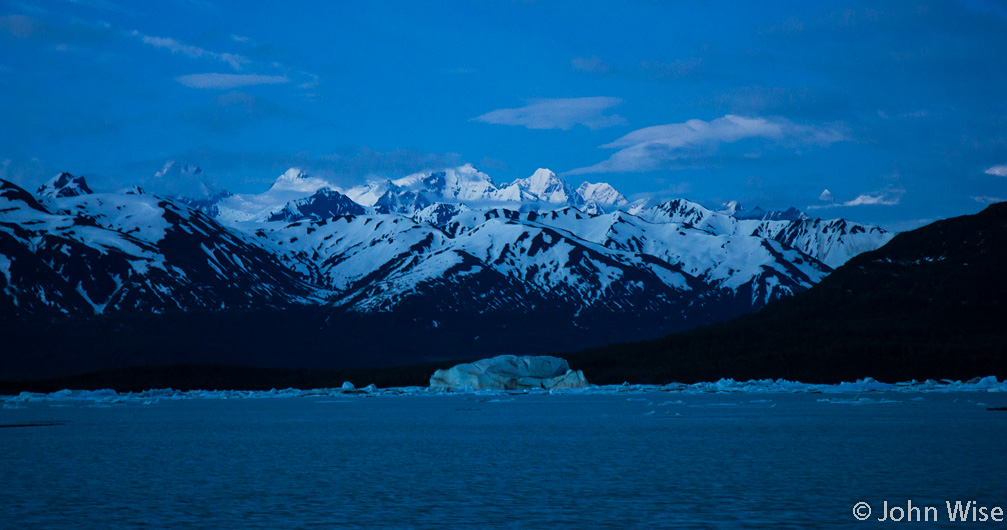
Waiting for the lake tsunami that never comes. It’s five minutes after midnight, and everyone else is asleep while Caroline and I try to cherish each and every second we have left here in Alaska. This will be our last full day on the Alsek. Those clouds on the right are hiding Mount Fairweather, which, according to Wikipedia, stands at 15,325 feet (4,671 meters) and is one of the world’s highest coastal mountains. We’ll not see Mount Fairweather on this trip, as the weather didn’t allow it. Something for us to come back for.
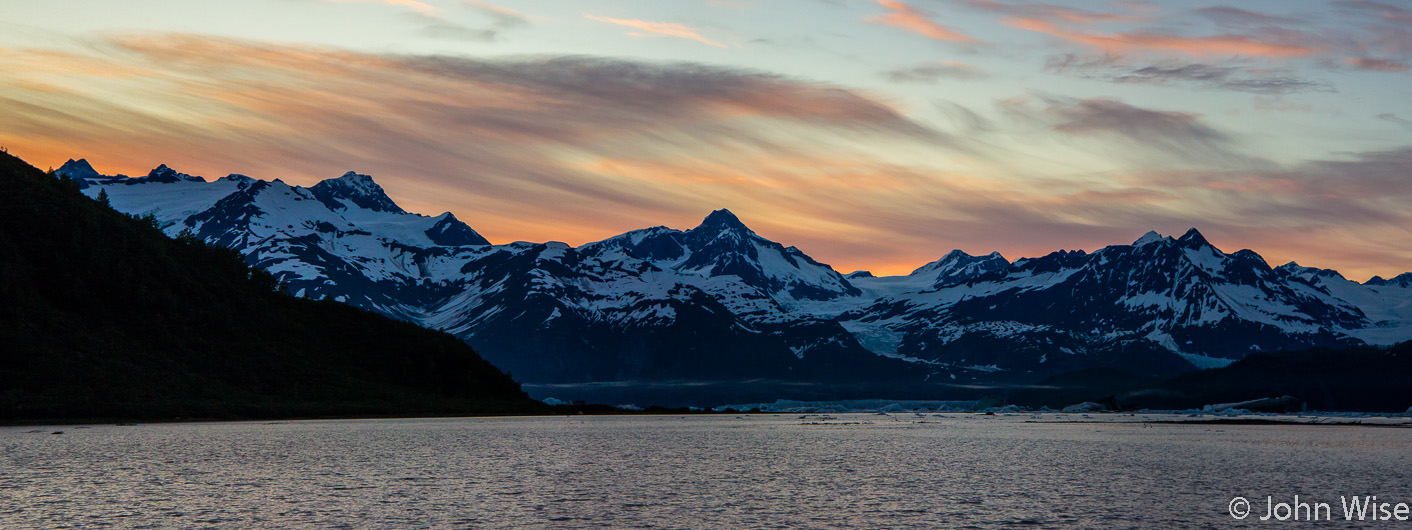
Four o’clock in the morning is the perfect time for a perfect sunrise. Looks like we might be having a sunny day here on the lake.

By 7:00 a.m., the clouds are moving in; fingers crossed, they will burn off. The funny thing about how the weather goes, it nearly always seems to have been perfect for the situation wherever Caroline and I find ourselves traveling. If it’s raining, well, that rain added something that made the place all the more special. Yesterday, it looked like winter had closed in on us, but still, there was incredible beauty to be found. I wonder how many people go on vacation wishing for great weather and are disappointed when they don’t get it? I, for one, am one of those who wish for it and then am pleasantly surprised by how all weather is great. Suppose it’s better than being in that situation where one will never again experience the weather.

Midday and overcast. But it still looks great to me!

Wandering around checking out the wildflowers when, guess who decides to show up. The sun, that’s who.

To those of you who might really be appreciating the details I have been bringing to you here on my blog regarding the Alsek River: I am accepting donations that will allow me to spend a few months and half a dozen back-to-back trips down the river, so I can share even more with you. I should be able to pull this off with about $25,000. Got an extra grand you can spare?
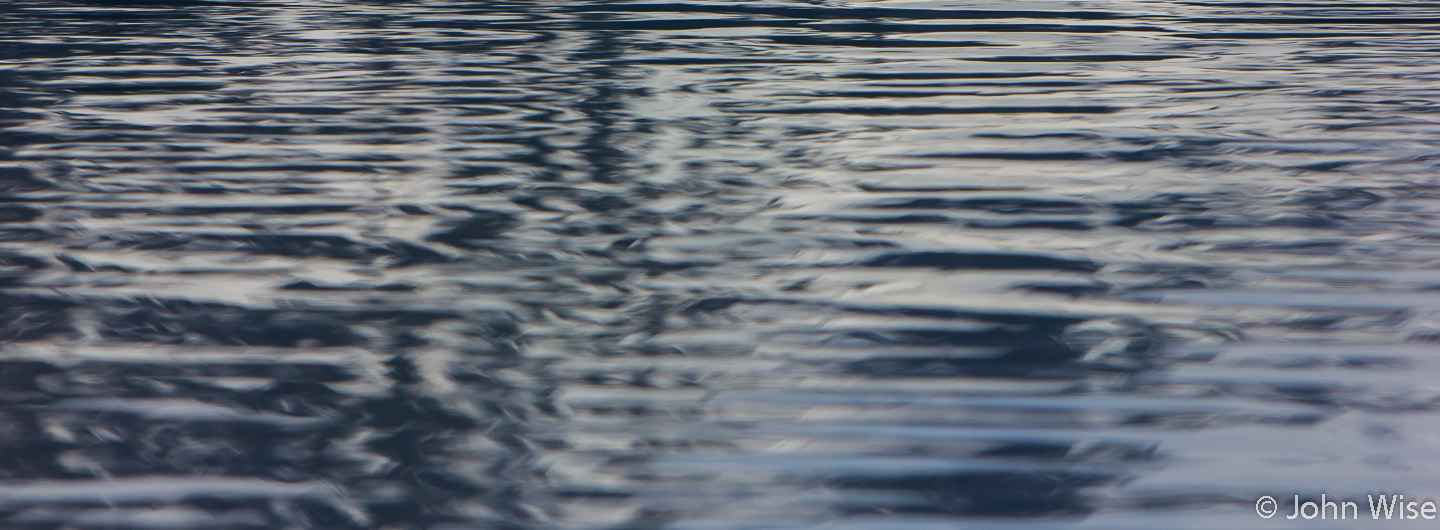
We have left camp to row out onto the lake. The weather is beautiful, and there are icebergs to inspect. In case this photo is too abstract, it is the lake’s surface with the mountains in the distance reflected in the water.

The majority of our group has opted to explore the mosquito-infested island in the lake; this is perfect because we can now explore the lake in near-absolute silence.

Just as it fell from the glacier, this iceberg still carries with it the rocks and dirt it had accumulated over the decades as it slid closer to the water’s edge.

Something rolled over not too far from us. It was at first a thrilling moment of wow, the low rumble, the craning our necks to find where the berg that just tumbled was, but nothing to be found. And then the tension started. From the wave created by the invisible iceberg rolling over, the ice between us and the rollover started crashing into each other. The sound of multi-ton massive chunks of ice can be more than a little unsettling. I start to wonder if this won’t trigger other bergs to roll, too, and here we are right out in the middle of them all.

Strange and almost familiar forms can be seen in the ice; it’s almost like finding animals in the clouds.

We try to find a path through the ice to go visit this 8-story tall massive iceberg, but our passage is blocked. Floating on the lake, drifting through icebergs, this is nothing short of spectacular.

How this rock still clings to the edge of this iceberg appears to defy gravity. I’d like to know how long and from how far this rock has traveled. Soon, it will sink to the bottom of the lake, and we may be the only people on Earth in the entire history of our planet who will have ever seen this particular rock. It now joins the history of observed rocks.

The weather isn’t perfect, but it does add a dramatic effect here on Alsek Lake. The other interesting aspect regarding the play of light, everything changes with the intensity of the sun or the shadows cast by the clouds. Look to the left of center the ice is deep blue; five minutes before, it was merely pale blue.

Just like the rock above, this piece of ice seems to have mere days left before it becomes an independent mini-berg.

Bruce is our guide out here, or should I say, the man letting us drift all over the place? If you’ve been even slightly intrigued by these images, let me suggest that you contact an outfitter and take yourself on a trip down the Alsek or maybe even the Tatshenshini; both rivers bring you to Alsek Lake! It’s cheaper than going to the Antarctic.

We sat here a while, listening to the drip, drip, drip of the iceberg as the sound echoed out of the enclave. If only I could share the delicate sound with you, it alone would convince you that you, too, need to visit this remote corner of North America.

Silty water and sun, everything I need to see art. The qualities of water, of wild water, are something we will see very few times in our lives. Unless we are at the ocean, most water that humanity will encounter has been sequestered – it is, in a sense, dead water. But on free-running rivers, we see the turbulence, convulsion, elasticity, and randomness that change by the instant. There was a time not too long ago when any of us would have been far more familiar with the flow of this life-sustaining liquid.

Stumbled upon this freshly turned-over iceberg. Could this be the piece that created the wave? We can’t know. No matter because at least we get to witness this incredible deep blue undulating and curved ice sculpture that elicits our oohs and aahs.

We continued floating and checking out the icebergs until it was time to turn back to shore and get busy with making dinner. Shaun stayed in camp today in order to get some things prepared for our departure from the river tomorrow. Hopefully, he has also started cooking. After the visitors to the island left their mosquito encounter, they paddled out onto the lake and joined us as we enjoyed the discarded ice that Alsek Glacier tossed into the lake.

On the previous evening, I guessed that the driftwood onshore came from lake tsunamis; tonight, I get proof. While wandering around waiting for dinner, I was about 100 feet from shore when I noticed these exposed roots of plants that appeared to be growing well out of the ground. Then I figured it out: this is where the water drained off the ground and pulled the surrounding sand with it back to the lake, leaving these roots high and dry. Even on this scale, these details are nothing less than fascinating. Of course, this could also simply mean the lake level was higher at some point, but lake tsunami sounds way more dynamic – thrilling even!

Spending our last “night” around the campfire. Tomorrow will be difficult, but tonight, we warm ourselves next to the flames and admire the surroundings. What an incredible day and an incredible journey down one of the few remaining wild rivers left on Earth.
